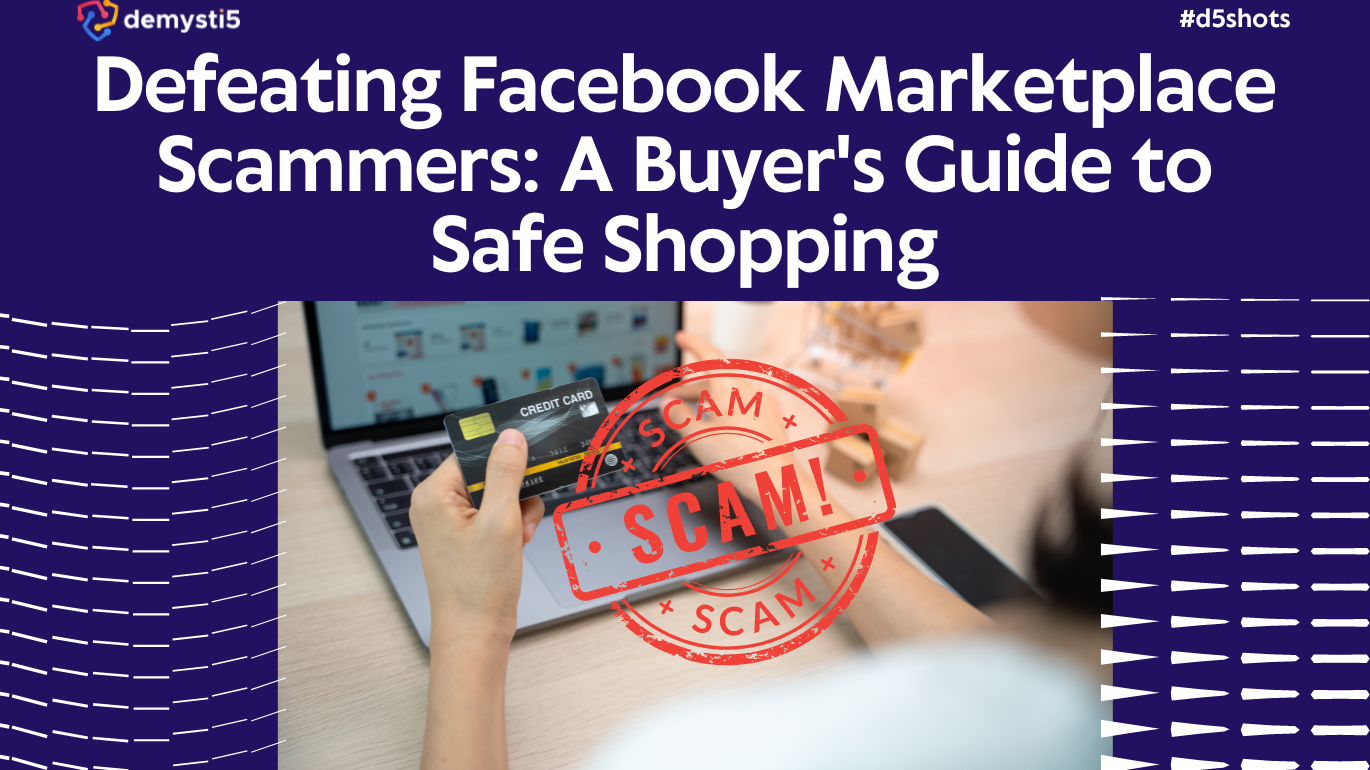Tips to Safeguard Your Facebook Marketplace Selling Experience
In the vast expanse of online commerce, Facebook Marketplace shines as a virtual hub where buyers and sellers convene. However, amidst the convenience and opportunities, a dark underbelly emerges – Facebook seller scams. These scams target unsuspecting sellers, exploiting their trust and financial well-being. This article will plunge into the realm of Facebook Marketplace seller scams, uncovering their strategies, repercussions, and, most importantly, how you can armor yourself against becoming a victim. Prepare for an enlightening journey through the intricate world of online sales and the measures to outsmart cunning scammers.
Also Read
Over 31,000 Australian Bank Passwords Leaked: All You Need to Know and Do
- Published on: April 30, 2025
Massive X (Twitter) Data Leak Raises Major Online Safety Concerns
- Published on: April 2, 2025
Download the demysti5 | Online Safety App and follow us on digital and social media platforms
- Published on: March 10, 2025
Seller’s Peril: Exposing the Intricacies of Seller-Centric Scams
1. The Stolen Credit Card Shuffle: Unauthorized Transactions
In this scam, a buyer makes a purchase using a stolen credit card, leaving you in a financial predicament when the transaction is flagged and reversed.
How It Works: Scammers buy items using stolen credit card information, receiving the goods before the transaction is detected as fraudulent. This leaves you with both the loss of the item and the charged amount.
How to Avoid the Scam:
- Verify the buyer’s information, including their location and transaction history.
- Be cautious of unusual purchase requests or multiple transactions in a short span.
- Use secure payment methods with fraud protection.
2. The Refund Rollercoaster: Manipulating Seller’s Goodwill
A buyer sends extra money for a purchase and requests a refund, often involving complex excuses or mistaken amounts.
How It Works: Scammers overpay for an item, then claim they made a mistake and ask for a refund. This plays on your desire to maintain a positive reputation and resolve issues promptly.
How to Avoid the Scam:
- Stick to the original transaction amount and payment methods.
- Avoid refunding extra amounts unless you’re confident about the buyer’s intentions.
- Communicate with buyers through the official platform to maintain transaction records.
3. The Shipping Label Swindle: An Illusion of Convenience
A buyer provides you with a prepaid shipping label, which you later realize is fraudulent, causing you to lose both your item and shipping costs.
How It Works: Scammers send you a seemingly valid shipping label, but it’s linked to a non-existent or fake payment source. The shipping label cost is then deducted from your account.
How to Avoid the Scam:
- Generate shipping labels through official channels within the platform.
- Verify the validity of the shipping label’s source and payment before proceeding.
- Keep records of shipping transactions and communication.
4. Verification Code Vortex: Unraveling Trust
A scammer insists you provide verification codes received on your phone, claiming it’s necessary to prove your legitimacy as a seller.
How It Works: Scammers request verification codes, which they use to access your account or manipulate transactions. This compromises your security and control over your account.
How to Avoid the Scam:
- Never share verification codes with anyone.
- Keep all transactions and communication within the official platform.
- Enable two-factor authentication for added security.
Also Read
Exploring the Metaverse: The Exciting (and Risky) World of Virtual Reality and Augmented Reality
about it
- Published on: February 11, 2023
Phishing Attacks: Understanding the Psychological Tactics Used to Trick You
- Published on: February 11, 2023
Inside the World of Cyber Criminals: Motives, Methods, and Targets
- Published on: February 12, 2023
5. Ship Before Payment Scheme: A Recipe for Loss
A buyer urges you to ship an item before receiving payment, preying on your trust or impatience for a quick sale.
How It Works: Scammers exploit your eagerness to close a deal by convincing you to ship the item first. Once shipped, they disappear without making the payment.
How to Avoid the Scam:
- Insist on receiving payment before shipping any items.
- Use secure payment methods and avoid cash-on-delivery arrangements.
- Be cautious of buyers who rush or pressure you to ship immediately.
6. The Digital Deal Escape: Luring You Away from Safety
A buyer requests to communicate outside of Facebook, often through email or messaging apps, to discuss transactions, veering you away from platform security measures.
How It Works: Scammers attempt to establish communication channels outside the platform, exposing you to potential scams, phishing attempts, or fraudulent transactions.
How to Avoid the Scam:
- Conduct all communication within the official platform’s messaging system.
- Avoid sharing personal information or sensitive data outside the secure platform.
Overall Recommendations:
- Scrutinize buyer profiles and transaction history before proceeding.
- Never share verification codes or personal information with buyers.
- Use secure payment methods offered within the platform to protect your financial interests.
Conclusion: As you navigate the multifaceted landscape of Facebook Marketplace as a seller, arm yourself with awareness and vigilance. The evolving tactics of scammers necessitate a proactive and informed approach to online selling. By understanding the array of seller scams, recognizing potential warning signs, and implementing preventive strategies, you can leverage the benefits of Facebook Marketplace while sidestepping the pitfalls. Let each transaction be guided by prudence and caution, ensuring that your journey as a seller yields fruitful results without falling victim to deceitful schemes.
Stay informed, stay cautious, and spread awareness to keep your friends and family safe from Facebook scams!
Sign Up to improve your Digital Security Now!








